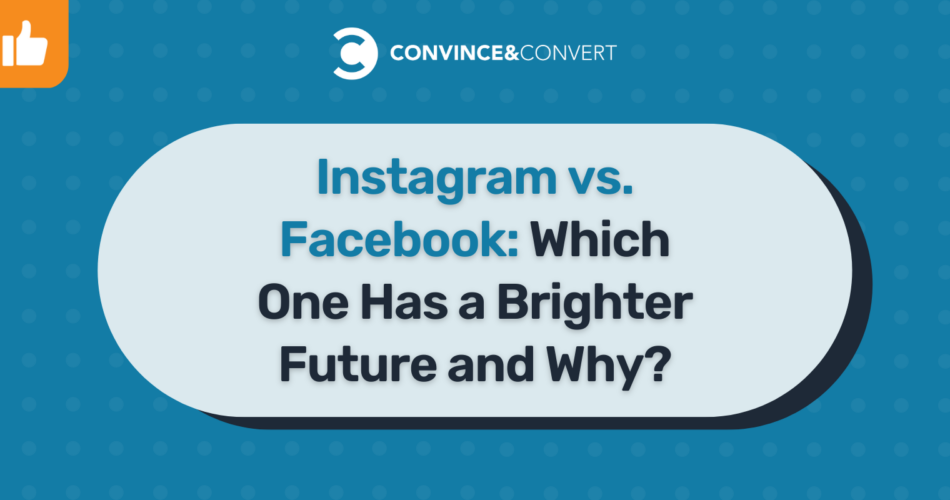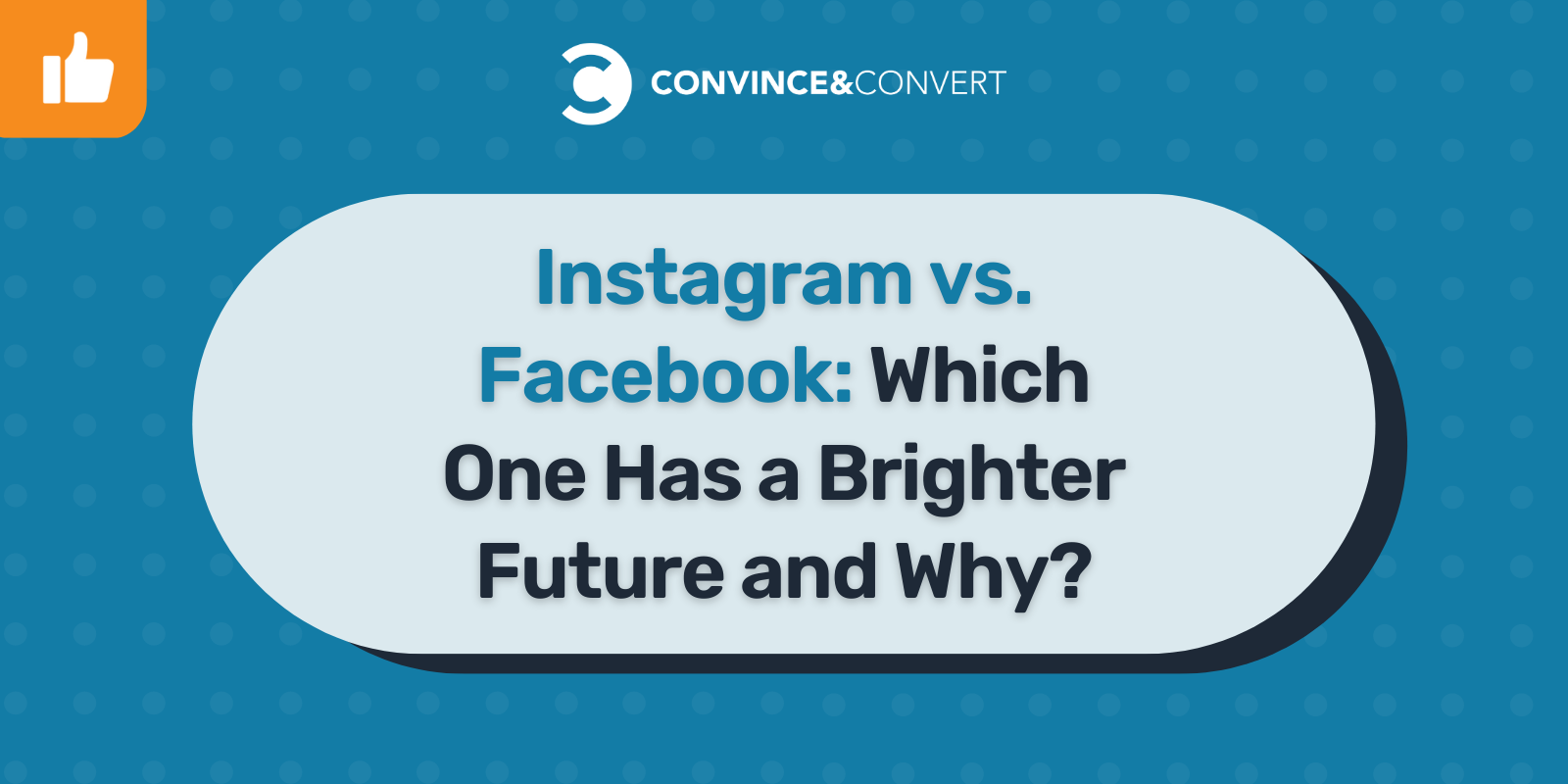
In 2012, $1 billion seemed like an awful lot to pay for Instagram, given that the photo-sharing network had just 30 million users.
But, Facebook was weak on mobile in those pre-IPO days, and the purchase of Instagram allowed an immediate shoring up in that area.
Mark Zuckerberg was lauded for his commitment to keeping Instagram independent, and not just Frankensteining the technology into the parent Facebook app. Now, six years later, his quotes are even more interesting:
“For years, we’ve focused on building the best experience for sharing photos with your friends and family. Now, we’ll be able to work even more closely with the Instagram team to also offer the best experiences for sharing beautiful mobile photos with people based on your interests.
We believe these are different experiences that complement each other. But in order to do this well, we need to be mindful about keeping and building on Instagram’s strengths and features rather than just trying to integrate everything into Facebook.
That’s why we’re committed to building and growing Instagram independently. Millions of people around the world love the Instagram app and the brand associated with it, and our goal is to help spread this app and brand to even more people.”
Not only have they kept Instagram independent, but we’re entering an all-new era in the Instagram vs. Facebook relationship: the era where the child beats the parent.
Instagram vs. Facebook: Key Differences
The key difference between Instagram vs. Facebook is the content formats supported by the platforms. Instagram only allows users to post photos, videos, Stories, and Reels along with a brief caption.
On the other hand, Facebook supports a wider range of content formats. Besides photos and videos, Facebook allows users to post other types of media such as links, long-form videos, articles, Stories, and quizzes. The key difference though is that the links in captions on Facebook are clickable.
What’s more?
Both Instagram and Facebook have mobile apps and their web versions. Facebook’s app and web platform are both popular with users. But when it comes to Instagram, users prefer to access the social media platform on the mobile app because it’s more user-friendly.
It’s also worth noting that Facebook has a larger user base than Instagram. As it stands, Facebook roughly has 2.96 billion monthly active users while Instagram only has 2 billion monthly active users.
When you dive deeper into the audience demographics, you’ll realize that both Instagram and Facebook have specific differences that make them suited for certain campaigns.
Let’s now take a look at these differences to see which of the platforms has a brighter future.
Audience Demographics
Both Instagram and Facebook appeal to different types of users. Instagram appeals to a younger generation of people below the age of 30.
As of April 2022, 30.2% of Instagram users were between 18 and 24 years old. In fact, 70.8% of its global users are 34 years old or younger.
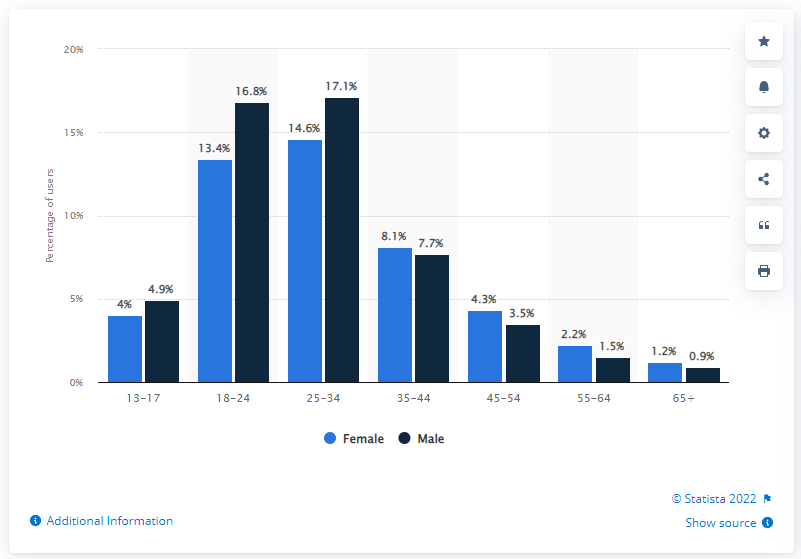
Image via Statista
Because of its hyper-visual nature, Instagram is popular among audiences who are seeking new creative ideas and style inspiration.
It also appeals to users who want to become influencers and use their personality and interests to help brands reach their target users.
If your brand targets a younger visually-aware audience, then working with an Instagram influencer marketing agency to promote your products is a great idea as it can help you gain lots of views and sales.
Makeup brand Curology (@curology) engages its young millennial audience with brightly colored images and catchy captions on Instagram.
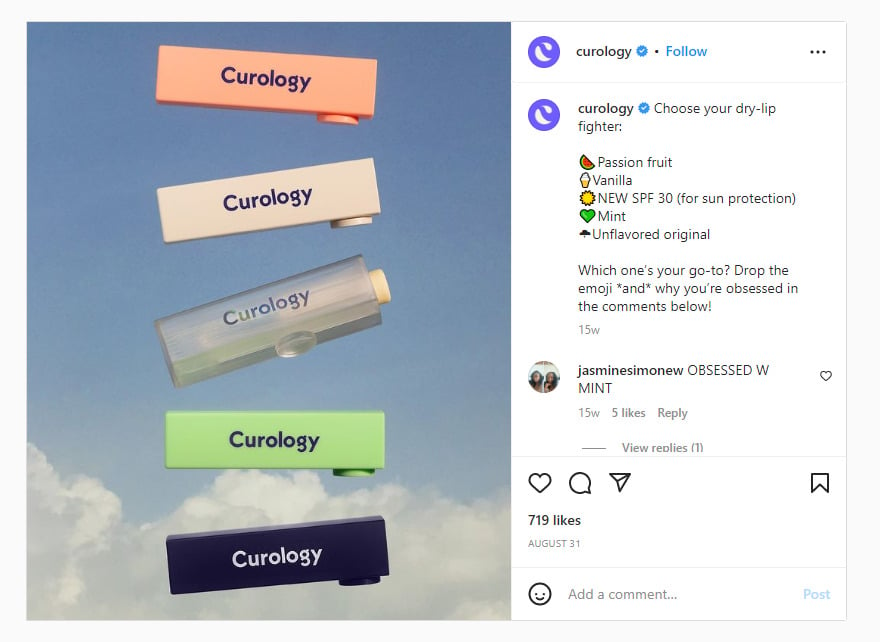
Image via Instagram
Facebook has a broader audience base compared to Instagram. Although the platform targets both the young and the elderly, it’s more popular among slightly older people.
Recent statistics reveal that 31% of Facebook’s users are between the ages of 25 and 34. However, close to 60% of its users are between the ages of 25 and 54.
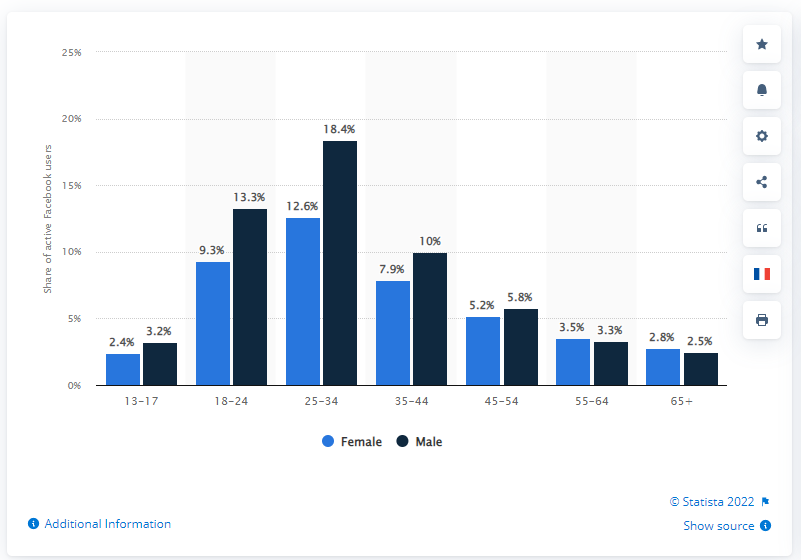
Image via Statista
The broader audience base makes Facebook a useful platform for brands that target varied audience segments across different locations.
McDonald’s, a brand with widespread appeal, uses Facebook to connect with its customers and advertises its offerings.
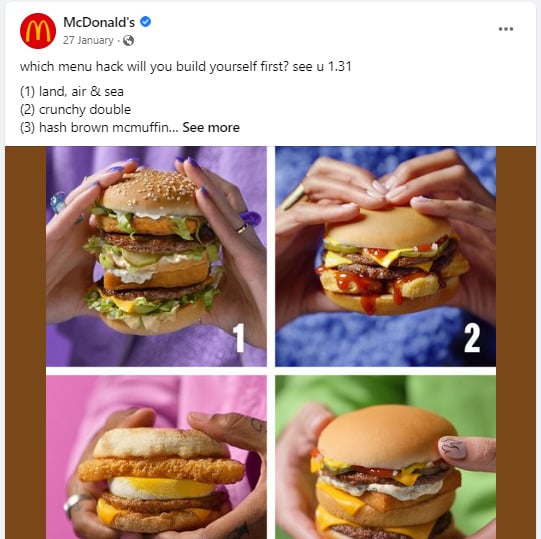
Image via Facebook
One of Facebook’s biggest assets is its ad platform, which also extends to Instagram. Facebook Ads allows brands to target specific audience demographics with their campaigns.
Engagement
Both Instagram and Facebook have high engagement rates because of their popularity. The main difference between these platforms engagement-wise is the intention of user interaction.
Generally, Instagram engagement is all about observation, inspiration, and discovery. Bohemian Décor (@bohemiandecor) looks to inspire users with elegant interior design photos on Instagram.

Image via Instagram
Instagram is often viewed as a platform for learning new trends and discovering brands, places, and events. People use it for visual inspiration and to get fresh ideas.
On the other hand, Facebook prioritizes personal connections. People mainly use it to interact with content shared by friends and family.
For that reason, it may not be the best channel for organic brand visibility since most people use it to connect with people they already know.
Ad Spend
The other difference between Instagram vs. Facebook involves ad spend for social media marketing on the respective platforms.
Facebook has a superior ad platform that delivers relevant content to users and it can be used to run Instagram ads as well.
Because of its effectiveness, users trust Facebook to show them relevant ads. As a brand, you can leverage this trust to launch ad campaigns on the platform. For instance, you can use sales navigator smart links if you want to promote sales presentations on Facebook.
When running ad campaigns on either Instagram vs. Facebook, you should consider the cost of your campaigns and how it affects your revenues. Facebook typically delivers better value to advertisers based on the cost per click.
A study by Socialinsider found that the average CPC for Facebook ads is $0.49 while that for Instagram is $1.09. Considering Instagram has a higher cost per click than Facebook, you need to improve your targeting to ensure the clicks you attract are of high quality.
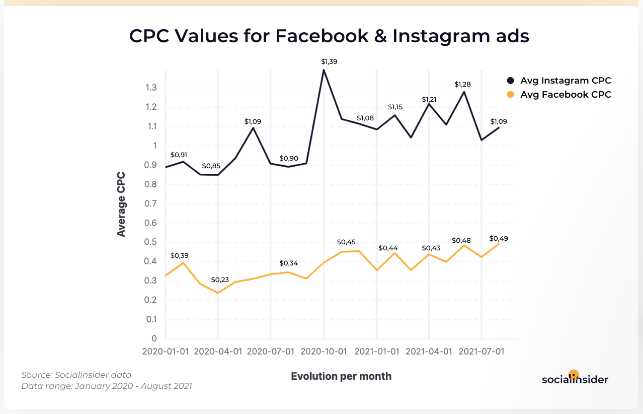
Image via Socialinsider
Facebook also has a higher click-through rate than Instagram. The average CTR for Facebook ad campaigns is 3.06% while that of Instagram is 0.68%.
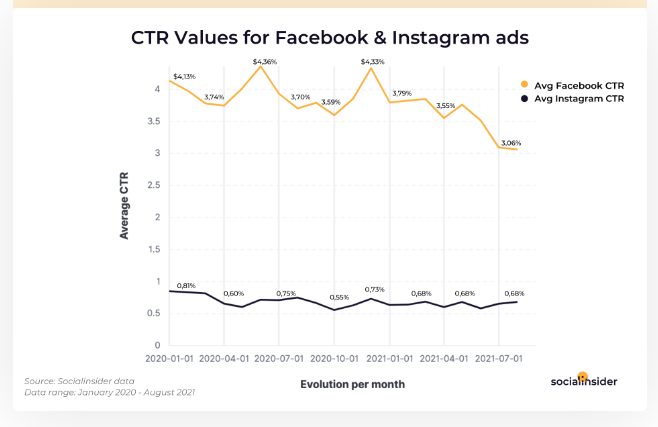
Image via Socialinsider
Algorithm
Social media algorithms determine what posts will be seen by a user and in which order. In the past, social media feeds had a chronological order where posts were displayed in the order they were published.
While this news feed style made sure users didn’t miss a post, things got messy when a user was following many accounts. This is because their favorite accounts can get buried in the news feed when posts are ranked chronologically.
To get rid of this problem, social media platforms developed algorithms that give users exactly what they want – relevant posts at the top of the news feed.
Algorithms are also helpful to marketers since by understanding how they work, they can use that information to create a better marketing strategy.
Here are the key differences between the algorithms of Instagram vs. Facebook you can use for campaign planning.
Instagram’s algorithm prioritizes:
- Timeliness – Recently published posts are displayed higher in the feed.
- Engagement – Posts with more likes and comments rank higher.
- Time spent viewing a post – Posts that have been viewed for a long time are prioritized on a user’s feed.
- Relationships – Is the post from an Instagram account that a user interacts with frequently?
- Profile searches – Accounts with many searches rank higher on the timeline.
- Shares – Accounts with many shares from the user rank higher.
Facebook’s algorithm prioritizes:
- Friends and Family – Posts from friends appear higher on a user’s timeline.
- Engagement – Posts with many likes, comments, and shares rank higher.
- Promotional posts are demoted – Posts that nudge users to buy something are demoted.
- Bait is downgraded – Posts that serve as baits for likes, comments, and shares rank lower.
- Visual content – Posts with images and videos tend to rank higher. Text-only posts are deprioritized.
With a clear understanding of how the Instagram vs. Facebook algorithms work, you will know which posts to publish on each platform.
While Facebook might look like the obvious choice for brands that want to reach a wider audience, its algorithm isn’t the friendliest towards branded content. Instagram fares better there.
So, let’s take a look at the reasons why Instagram will outpace Facebook soon.
Instagram’s Future Is Brighter Than Facebook’s Future
Back in 2018, Convince and Convert’s Jay Baer reported on groundbreaking new data from Edison Research that found Facebook usage declined for the first time ever. The same survey uncovered that while Facebook diminished, Instagram flourished.
In fact, at the time Jay predicted that by 2020, Instagram would overtake Facebook in total usage in the United States, which isn’t the case just yet.
In fact, Facebook still rules the roost in 2022 with 90% of marketers using it. Instagram isn’t too far behind though.

Image via Statista
You may have some hypotheses of your own, but here are the nine reasons I believe Instagram is still a contender to surpass Facebook.
1. Instagram Is More Mobile-Friendly
Given that it was a mobile-only platform for many years, and its narrower array of content types, it’s no surprise that Instagram is a better mobile experience than Facebook. Facebook has come a long, long way in this regard, but Instagram is made for the phone, period.
And with 98.8 percent of social content being consumed in a mobile environment, that structural advantage is significant.
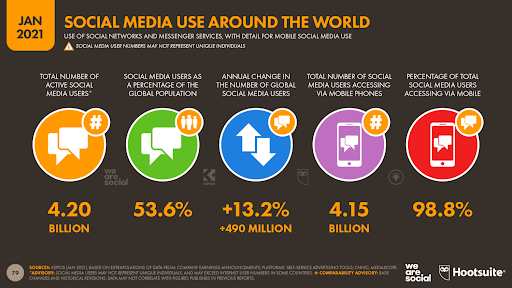
Image via Data Reportal
2. Instagram Has Better Stories Integration
Again, this one isn’t a shock, since Instagram is where Zuckerberg and friends first incorporated the “stories” function that was inspired by Snapchat. Facebook has stories of its own now, but the interface tie between Facebook News Feed and Facebook Stories is murky and tenuous, at this point.
Instagram Stories are also insanely popular with 500 million people using them daily.
3. Instagram Is Trending Up Among Young Americans
The Infinite Dial study from Edison showed that among Americans ages 12 to 34, usage of Facebook declined sharply between the years 2020, with increases in Instagram and TikTok usage.
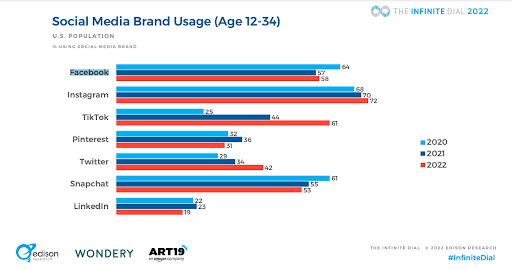
Since the data was released, Snapchat has had their own problems with user growth and loyalty, driven by an endlessly changing interface, and a $1.3 billion dollar drop in valuation linked to a tweet from Kylie Jenner.
Consequently, I believe that Instagram will continue to win over youthful social media users, who are of course the future core of any social network.
4. Instagram Is More Commerce Friendly
Direct commerce on Facebook has been tried several times, with only modest success.
But commerce on Instagram is woven so tightly into the experience, that it feels like a very natural extension of the platform. I’ve personally bought a bunch of stuff on Instagram, and the sophistication of the targeting algorithm is very strong.
And the experience is going to get even better, for users and for advertisers. Just this week, Instagram announced that they are rolling out in-app payments, meaning that you can buy from the photo directly, without having to leave Instagram to visit a website. This is going to transform Instagram into a commerce powerhouse for products.
Similarly, it’s possible to make shoppable videos on Instagram that can be used by customers to make a purchase right from within the platform.
5. Instagram’s a Better Place for Brands
From a marketing standpoint, the constant changes to Facebook’s display algorithm for News Feed make it increasingly difficult (some say futile) to try to gain organic reach for company posts. In comparison, while Instagram makes changes, to be sure, they are less draconian, and the brand/user coexistence on Instagram is much better overall.
There are many brands whose content is genuinely a pleasure to encounter on Instagram. Not sure that’s often the case with brand Facebook posts.
6. Instagram Has Better Discovery
Due to the heavy emphasis on hashtags from the beginning, and the widespread use of five to 20 of them in posts, it’s easier to discover content that you like on Instagram. Because of the ability to get content “found” on the platform, publishers have flooded the hashtag system and gamed the system.
7. Instagram Is a More Positive Place
I’m not suggesting there aren’t trolls and misanthropes on Instagram—there are. But in comparison to Facebook, where even the banalest of posts seems to devolve into some sort of politics-laden, us versus them food fight, the discourse (as it were) on Instagram feels—at least to me—more consistently positive and uplifting.
Of course, positivity alone isn’t enough for Instagram to overtake Facebook in usage. But social media is supposed to be fun. It’s supposed to be an escape. It’s not supposed to be the place you confront your demons, or your accusers, in most instances.
Now, whether or not all the perfect photos on Instagram make you feel better or worse about yourself is the matter of quite a bit of academic study right now, but at least you don’t have as many people yelling at you in the comments section.
8. Instagram Has Messaging Built-In
Facebook Messenger is an unqualified hit. Adoption is soaring, and Messenger is perhaps the best real estate for branded interactions right now, powered by bots and chat (including from Convince & Convert partners like ICUC.
But Instagram chat/messaging can do at least some of the things that Facebook Messenger can do, and that gap has closed with video chat, reactions, Notes and more.
If, given the option, you could keep your messaging function and your social network in one app instead of two, wouldn’t you do so? I know I would.
9. Instagram Is Opening Up To Developers
As Facebook grows more cautious about developer ecosystem and data usage due to the Cambridge Analytica scandal and similar transgressions, it’s simultaneously embracing MORE developer engagement over at Instagram.
This duality is fascinating and indicates that Facebook continues to be quite serious about keeping Instagram as a totally freestanding community.
The company had announced that users will be able to use third-party camera effects and stickers.
And, in a nod to Instagram’s present and future role as users’ preferred social network, Instagram also allows users to share Stories to other apps like Facebook. At the same time, users can share things to Stories from other apps directly, such as Spotify. This is also fascinating, as it sets up Instagram stories as the de-facto, highly flexible repository of users’ real-time experiences, even if those experiences were initially captured outside of the Instagram application.
Do you think Instagram will eventually surpass Facebook? Click To Tweet
Instagram vs. Facebook: What Does the Future Hold?
Facebook is still a behemoth and is the only social network that approaches ubiquity. But, Instagram is turning into a BETTER social network, in my estimation. If that continues, it’s entirely possible that Instagram becomes more popular than Facebook in the coming years, at least among users in the United States.


